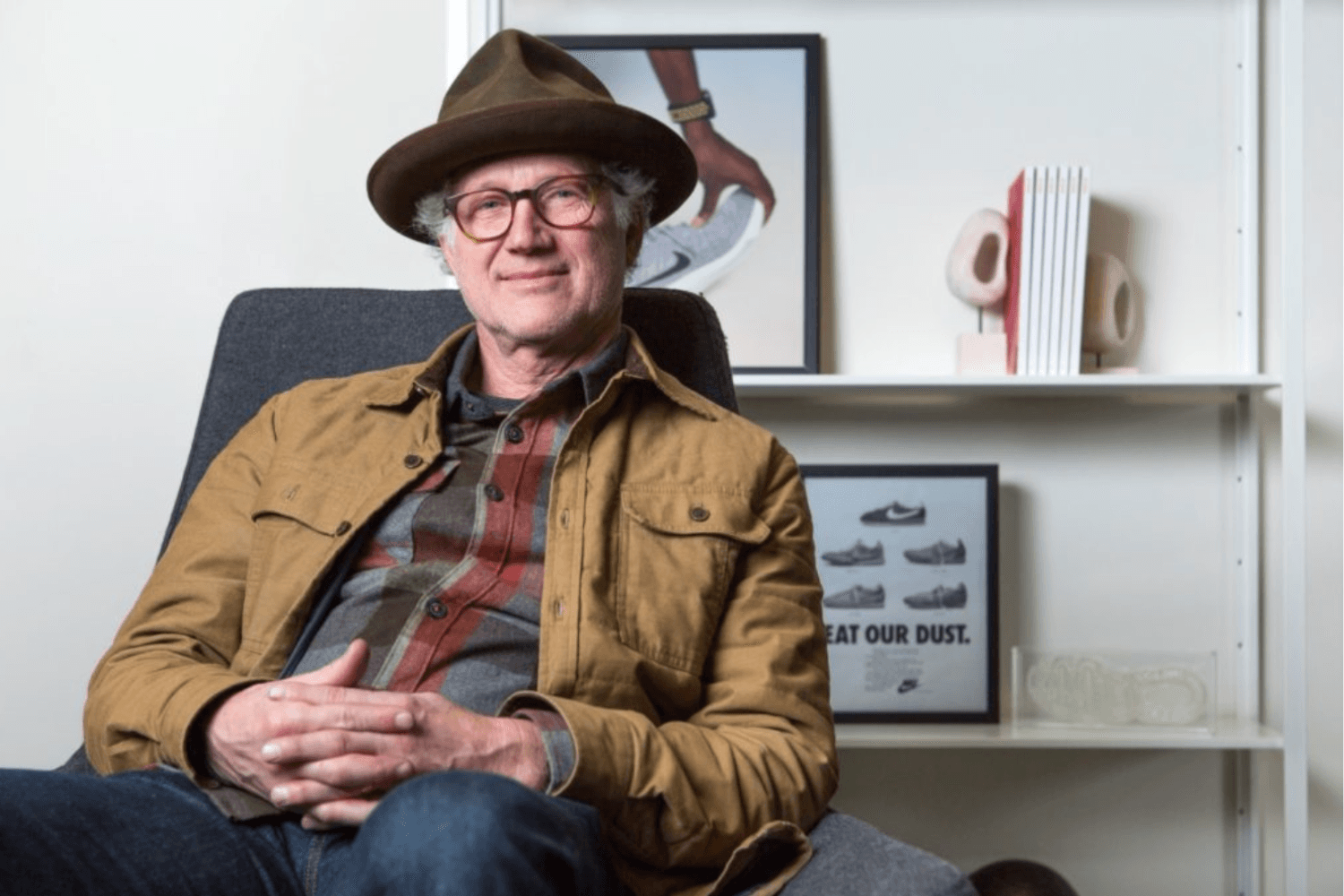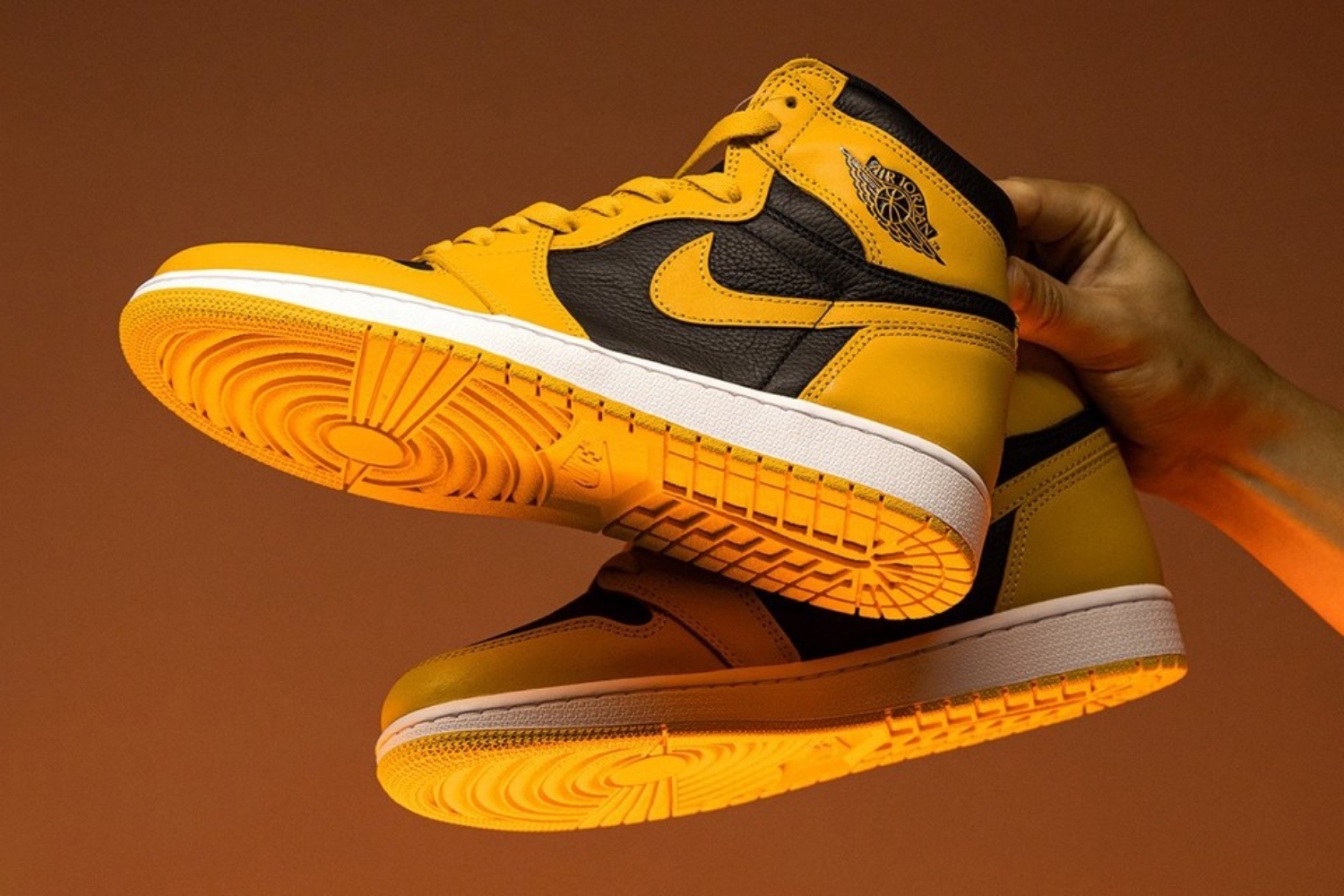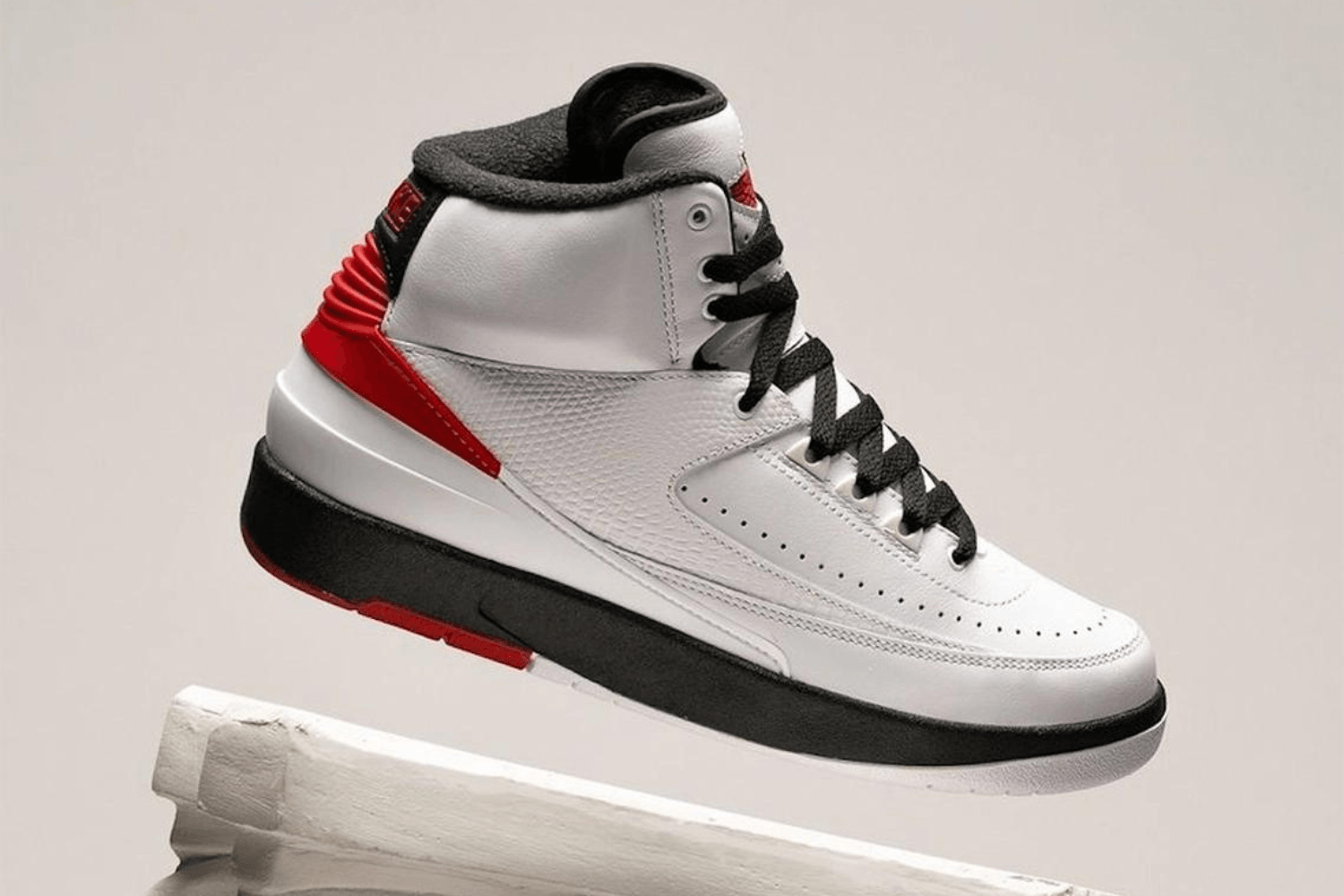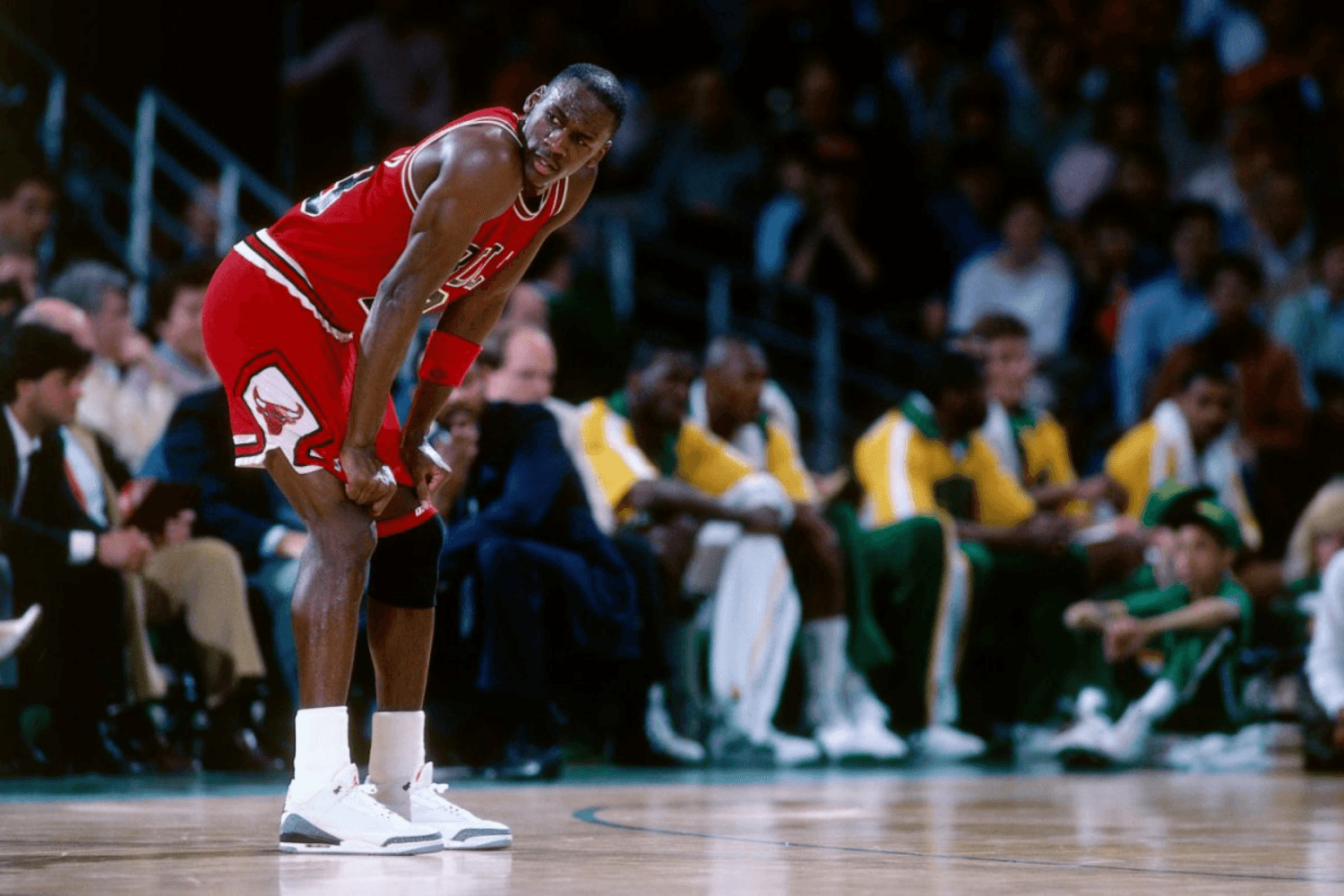The History of Air Jordan
The Air Jordan brand was born in 1983, when Nike signed rookie basketball player Michael Jordan and gave him the opportunity to design a new silhouette of his choosing, with royalties for every Jordan sneaker sold.
Designed by Peter Moore, the first Air Jordan model debuted in 1985. The bold ‘Bred’ combined the black and red of the Chicago Bulls’ uniform and featured the ‘Wings’ logo.

The sneaker violated the NBA’s strict uniform code due to its lack of white, and Jordan was fined $5,000 every time he wore them on the court, earning the colorway the nicknamed ‘Banned’. Rather than backing down, Nike used the ‘Banned’ colorway as fuel for a groundbreaking marketing campaign that helped launch the sneaker into icon status (even though the actual controversy involved the Nike Air Ship, the predecessor of the Air Jordan 1).
The Air Jordan 2, released in 1986, was designed by Bruce Kilmore this time and made in Italy, going for a more luxurious look with no Swoosh branding. It emphasised a streamlined, clean-cut silhouette, with elegant stitching and smooth lines. Not as popular as the AJ1 and overshadowed by the later Air Jordan 3, the AJ2 still laid down important groundwork for the evolution of the brand.

Known as one of the best Jordans of all time, the Air Jordan 3 came along in 1987, designed by the legendary Tinker Hatfield. Listening to Michael’s needs, he created a mid-cut and lightweight silhouette and incorporated the now iconic elephant print, along with visible Air units and a personalised logo on the tongue. With a strong ad campaign featuring Spike Lee, the AJ3 was enough to convince Jordan to stay signed with Nike when he’d been ready to part ways.

Nike continued to push boundaries, releasing the Air Jordan 4 in 1989 with added mesh and plastic wings for improved lockdown, the Air Jordan 5 in 1990 with reflective tongues and shark-tooth midsole designs, and the Air Jordan 6 in 1991, which was worn during MJ’s first NBA championship win.


Over the years, the Jordan brand became known for its innovative design, premium quality and storytelling, quickly expanding beyond performance footwear to influence everything from hip-hop to streetwear to luxury fashion.
Typically releasing a new model every year since the very first Jordan that debuted in 1985, the Air Jordan 39 is the latest addition to the line-up, released in 2024. The Air Jordan 40 is expected in Fall 2025.

Air Jordan: Answering Your Questions
When was Air Jordan founded?
The Air Jordan brand was born in 1983, when Nike signed basketball player Michael Jordan and gave him the opportunity to design a new silhouette of his choosing.
When was the first Air Jordan shoe released?
The first Air Jordan shoe debuted in 1985, designed by Peter Moore and appearing in a black and red ‘Bred’ colorway inspired by Michael Jordan’s team the Chicago Bulls.
How many Air Jordan shoes are there?
As of 2024, there are currently 39 models of Air Jordan available. The Air Jordan 40 is expected to release in Fall 2025.
Who owns Air Jordan?
Air Jordan is owned by Nike, Inc. Michael Jordan receives royalties and has creative input, but the brand is fully operated by Nike.
Where are Air Jordan shoes made?
Air Jordans aren't manufactured in one specific location. Air Jordans are produced in various factories located in different countries, including China, Indonesia, and Vietnam.
How are Air Jordans made?
Air Jordans are made through a detailed, multi-stage process that includes material cutting, sewing, sole preparation, lasting, and finishing. It begins with cutting materials into precise shapes, followed by sewing the upper portion of the shoe. Next, the sole is prepared and attached to the upper using the lasting process. The heel is then added and shaped, and final finishing touches complete the shoe.
Jordan shoe laces are produced using specialised braiding machines and a variety of materials. Typically made from synthetic fibres like nylon or polyester, and occasionally cotton, the laces often feature a waxed coating for added durability and performance. Automated braiding machines weave the fibres into a continuous cord, which is then cut to the required length and finished with plastic tips for easy lacing.
What is the most popular Air Jordan shoe?
The Air Jordan 1 is widely accepted as the most popular Air Jordan model, with the Air Jordan 3, 4, and 11 close behind.
What is Air Jordan retro?
An Air Jordan Retro is a re-release of an original Air Jordan model, often in its original colorway. They’re called ‘Retro’ because they revive classic designs from earlier years. They’re designed for lifestyle over performance.
Do Air Jordan fit true to size?
For a full overview on how different Air Jordan models fit, check out our Air Jordan Sizing Guide here.
How do you tie Air Jordan sneakers?
For guidance on tying your Jordan laces, check out our Ultimate Sneakerjagers Lacing Guide!
How do I clean my Air Jordan sneakers?
An Air Jordan sneaker should be cleaned by hand. For the best results, remove the laces, then use a toothbrush to remove obvious dirt from the surface. Mix two drops of a mild detergent with 1 cup/240ml of warm water and use a sponge or cloth to gently scrub harder stains. Use a damp cloth to wipe off the residue, then let them air-dry.
For suede or nubuck, use a suede brush to remove surface dirt, a suede or pencil eraser for scuffs, and white vinegar or suede cleaner for stains. Dip a microfibre cloth into the liquid and lightly dab it on, let dry, then brush it over.
For a smelly sneaker, you can sprinkle baking soda inside the shoe, then leave overnight. The powder will absorb moisture and neutralise the smell. Shake out the excess before wearing again. Alternatively, you can use silica gel or activated charcoal bags for the same results.
Laces can be cleaned with a mild detergent and rinsed afterwards, or you can put white laces in a 1:5 bleach and water solution for a few minutes and then rinse thoroughly with clean water.
In addition, we do not recommend putting your shoes in the washing machine. Sneakers made of leather and suede can come out damaged. With shoes made of canvas or cotton, the risk is less, but the chance of damaged sneakers remains. So we recommend always washing your sneakers by hand. If you do put them in the washing machine, then place the shoes in an old pillowcase beforehand.
Where can I buy Air Jordan sneakers?
Do you have your eye on this brand? With our sneaker search engine, you can browse Air Jordan at different retailers and at different prices. Our release calendar also keeps you up to date on Air Jordan restocks and new releases!

Popular Air Jordan Models
Air Jordan 1
Released in 1985, the Air Jordan 1 is the original model, known for its high-top silhouette, simple leather construction and bold colour blocking.
Made from full-grain leather and featuring the Wings logo on the collar, the AJ1 was built for performance, but is now a streetwear staple.

Air Jordan 3
The iconic elephant print was introduced on the Air Jordan 3, along with a visible Air unit and the Jumpman logo. With a tumbled leather upper and mid-cut design, it has a flexible and stylish silhouette.
The AJ3 thrives in the streetwear scene for its nostalgic and bold design.

Air Jordan 4
The Air Jordan 4 places more technical upgrades on the foundation of the AJ3, adding mesh panels, plastic lace wings, and improved ankle support. It’s generally made of nubuck, suede of leather with moulded support elements.
The aggressive yet comfortable silhouette is hugely popular in Europe and Asia.

Air Jordan 5
Drawing inspiration from WWII fighter planes, the Air Jordan 5 features a shark-tooth midsole pattern and a reflective tongue. Materials range from leather to suede to nubuck, and its translucent sole was the first in the Jordan line.
A favourite in the USA for its bold look, the AJ5’s unique design makes it a standout model in the Jordan range.

Air Jordan 11
Debuting in 1995, the Air Jordan 11 is a revolutionary addition to the line, combining patent leather, ballistic mesh, and a carbon fibre plate. Offering luxury and performance in one sneaker, its glossy look made it an instant icon upon release.
The ‘Concord’ and ‘Bred’ are particularly legendary colorways of the Air Jordan 11.

For more FAQs on your favourite sneaker brands and models, visit the Sneaker FAQ page.







